This LA-Based Maker Carves One-of-a-Kind Pieces From Salvaged Trees
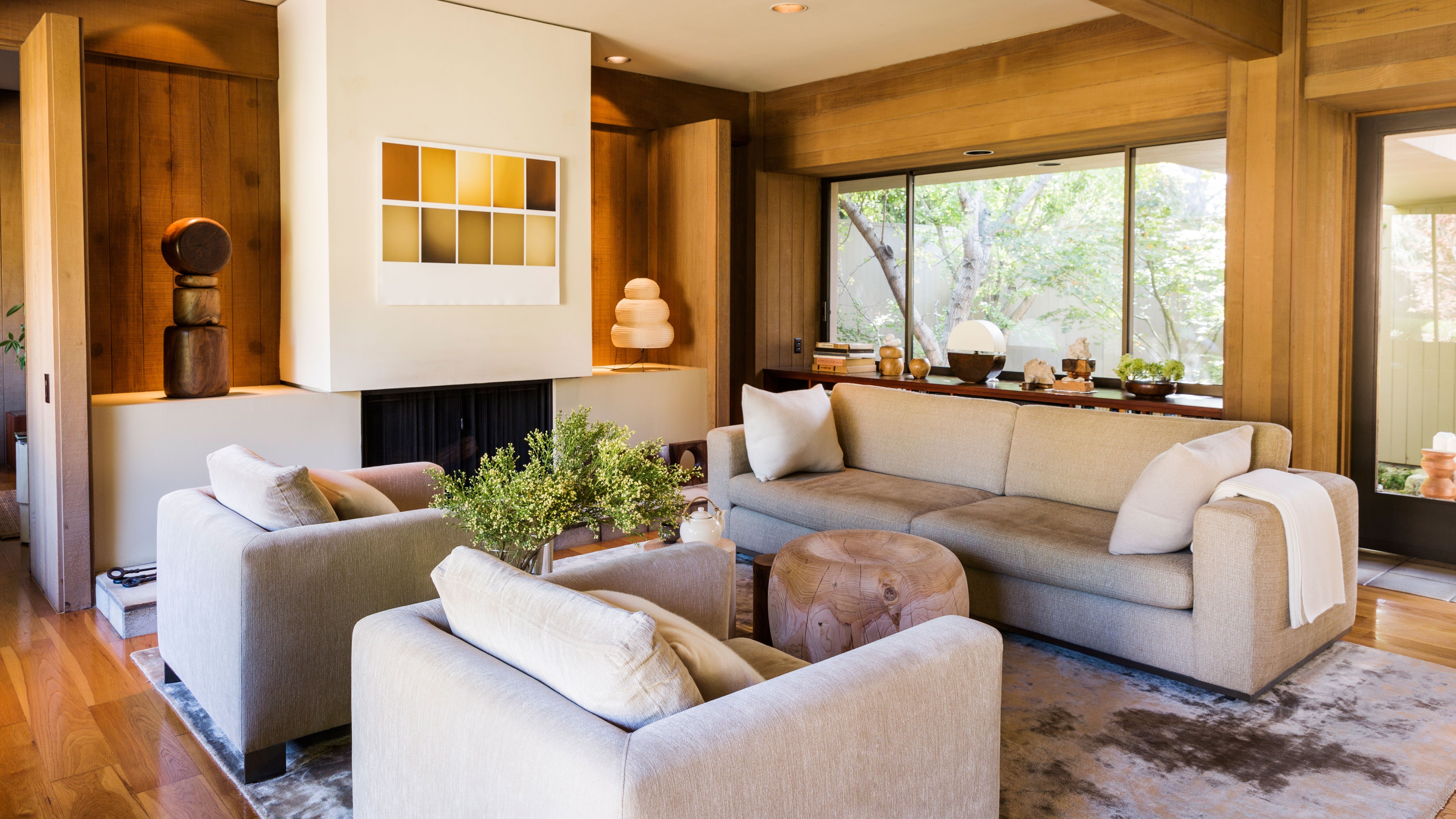 |
Christopher Norman Projects creates geometry-informed wood furniture and sculpture from whole trees harvested in Los Angeles. Here, a collection of wood sculptures and a stool in client's modern living room. Photography by Emily Berl. |
 | |
Christopher Norman |
F
or Californian maker Christopher Norman, the process of crafting furniture is just as important as the final product. Norman begins the act of creation by acquiring urban trees that are slated for removal. As he carves subtractively into the solid tree trunks — either by hand or lathe, or using a 30-foot-long industrial pattern mill from the early 20th century — he builds a relationship with the wood, unveiling the multitude of grain patterns and colors found within a single tree. Building by hand brings meaning to his process. "I’d rather be touching wood than a computer mouse," he says. After completing an object, he donates hundreds of pounds of scraps to city farms, where the same tree that gave life to his objects transforms once again to become mulch and soil additive.
Because Norman works with fresh wood, his pieces change over time as they dry, the final forms emerging only after being settled and styled in the client’s home. The glossy and visually captivating designs offer a range of possible uses that ultimately depend on the client, who must build a relationship with his furniture on their own. "I want my clients to have to discover for themselves how they want to live with my work," he says. Here, Norman tells Incollect about his approach to craftsmanship and the lifespan of his designs — from living trees to collectible wood objects with unique personalities.
 |
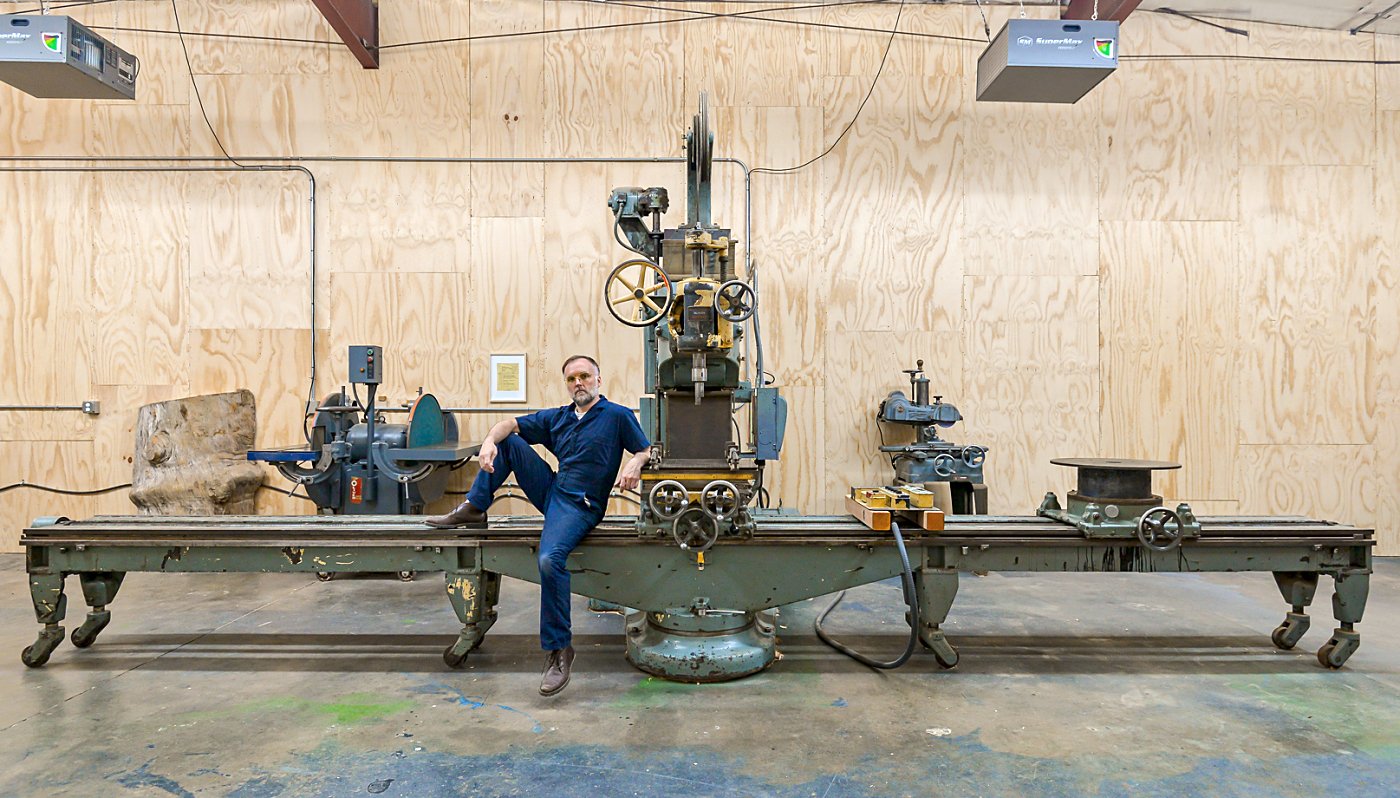 |
Rather than using a CNC machine, Norman hand-carves his pieces with a lathe or 1940s pattern mill (pictured above). His work emphasizes the connections between human and natural worlds. |
Why do you use industrial technology from the early 20th century?
Most of my work is done using a lathe or pattern mill, and they are much larger than what is commonly available now. Both were originally made for pattern-making shops that would make wood molds for cast metal objects. The largest cast pieces would be for huge ships, bridges, and power plants, and my machines were created to make those patterns. Nowadays, patterns are much more often made with CNC machines. Working by hand rather than by program, I can improvise as I work to get the best figure or tweak a feature. For my pieces, a computer wouldn’t add anything else to my toolkit that I can’t already do manually. However, I’m not a Luddite. I spend plenty of time on the computer doing everything else that needs to be done.
 |
 |  | |
Top: Untitled (Cylinder 1) is crafted by hand from walnut. Bottom: In Untitled (Minimal Surface 3), wave-shaped discolorations in the Deodar Cedar give it a unique appearance. | ||
Which woods do you like to work with?
Walnut is my favorite. Walnut's figure, smell, and finish are the best and most surprising to me. Ash is gorgeous and nearly opposite in tone to walnut. Cedars and other softwoods are the most underrated woods that I love to work with.
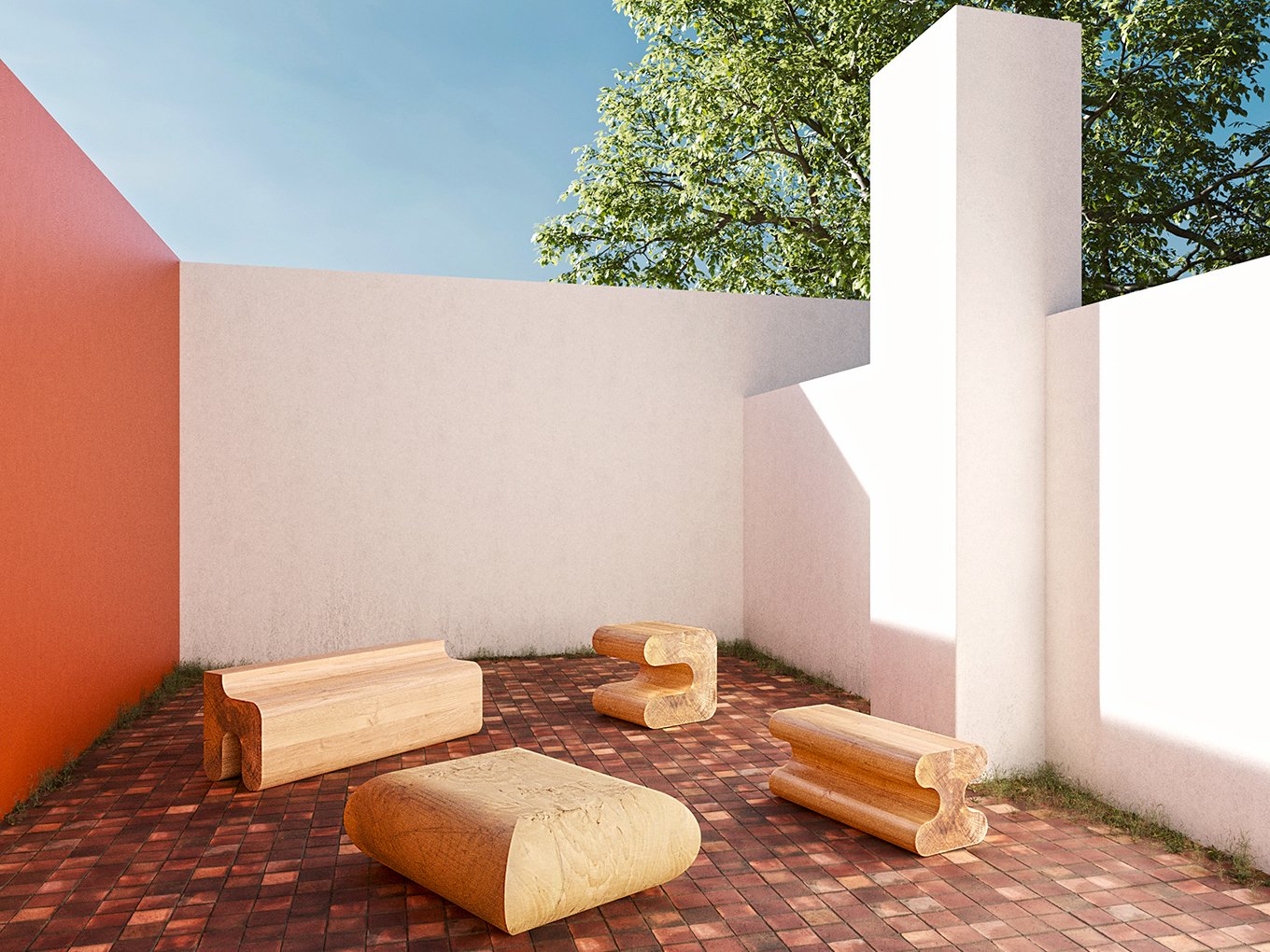 |
Above, pieces from Norman's artistic Extrusion series surround a modern coffee table. Render by Charlotte Taylor and Victor Roussel. |
Why do you work with wood when it's still wet (or "green")?
There is a very long tradition of working with wood before it is seasoned. The wood is easier to work, and you get a better finish while the fibers are still pliable. While I am making something that is precise and geometric, I enjoy how, with green wood, the shape of my object distorts slightly as it ages. This transformation is often only appreciated by touching the piece. As the wood acclimates to its new form and environment, subtle changes can be felt on the surface as the wood releases tension and dries. Sometimes that change can be seen, but you can appreciate it more through touch.
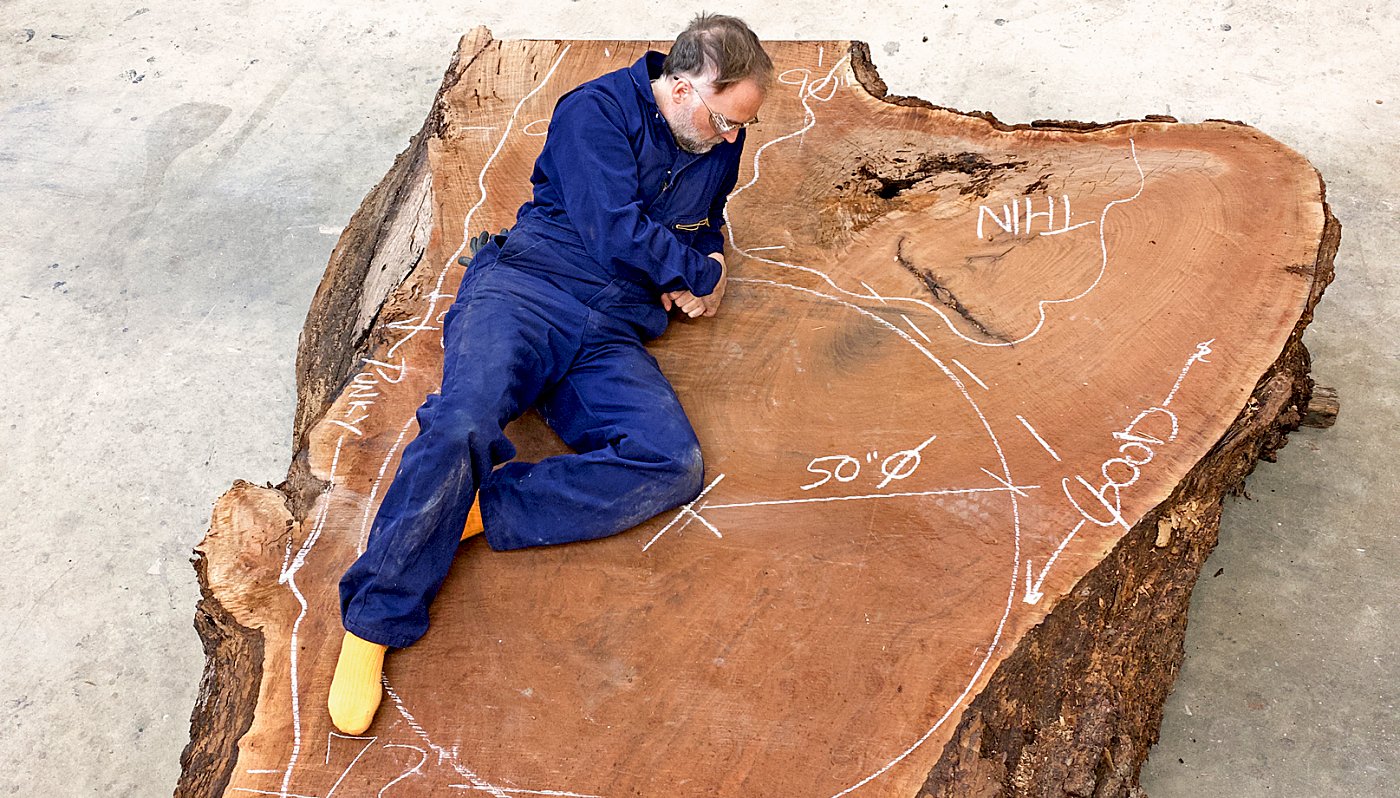 |
Norman lies on top a large slab of found wood. |
.
How do you source your wood?
For the wood I use, I get almost all of it locally here in Los Angeles. In the Los Angeles area alone, there are thousands of trees cut down every year. I work with arborists and sawyers to source whole logs. Many of the trees come from residential land, and these trees have already been a part of a family’s life. When I use them to craft new objects, I create the opportunity for another life for the tree. It is liberating to know that the wood likely would have gone to a landfill or turned into firewood if I didn't use it.
 |
In Untitled (Extrusion 2), the arched silhouette is mirrored in the rounded grain of the Deodar cedar. |
The shapes of your pieces have a strong visual appeal. What inspired the arc silhouette of Extrusion 2?
Extrusion 2 comes from a family of similar objects. Here I wanted to play with a nearly fully round piece pressed into a rectangle. It was an experiment in just how rounded a furniture-sized piece could be and still be recognizable as a table or stool.
 |
Untitled (Revolution 4) is crafted from a single piece of ash. |
Could you describe your creative process?
My process is this: I make formal, almost abstract sketches of forms I want to realize. At this point, they are scaleless. I may have a piece of wood on hand that, obvious to me, is perfect for one form or another, or else, I put feelers out for a very specific log to make a piece from. Since none of my pieces are glued, I am very deliberate about what part of a log the piece will be made from. Once I start cutting wood, there is no way to turn back, so instead, I may make small moves here or there to get the best form or showcase a feature of the wood.
 |
Minimalist forms are a key feature of Norman's work. Render by Charlotte Taylor and Victor Roussel. |
You're also interested in historic homes. How does your research affect how you design and build furniture?
I have a love for history and artifacts — my first career was in historic preservation. Each epoch, whether recent or ancient, has its own aesthetic influenced by the culture of the time and the technology available. That said, there are undercurrents of common formal vocabularies. Ancient Roman bowls are often almost indistinguishable from modern bowls, even in how they are decorated. In my design work, I seek out these primary forms and then reconstitute them at a different scale and in a different material or context.
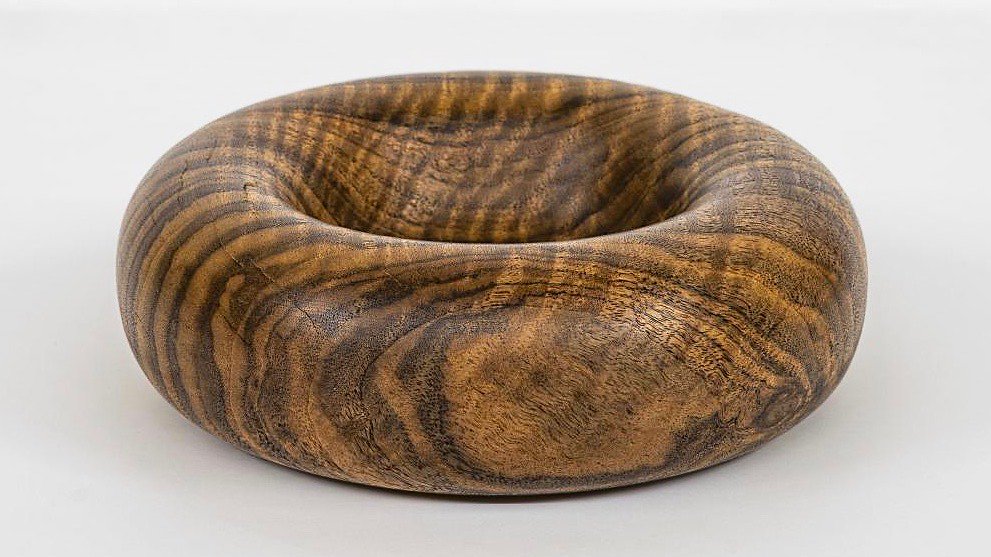 |
Norman works on the assumption that the natural beauty of the wood surpasses any artificial lines or finishes. Here, the Untitled (Minimal Surface 2) is pictured in walnut. |
How do you typically finish your work, and why is this attention to finish important?
The best use for my work is just touching it. While I think that all of my work is beautiful, the experience of touch is even more critical. When you touch a wood object, you're reminded of nature. Aside from the form, the surface finish is essential, so I sand everything using fine sandpaper until the wood can't get any smoother. Then I use only natural and traditional finishes like food-grade linseed oil.
 |
 |  | |
In Untitled (Cylinder 3), the Deodar cedar features multiple colors arranged in inter-weaving patterns. | ||
As you carve, how do you judge whether or not you're effectively enhancing the natural wood grain?
Since all of my work is subtractive, I watch what is developing between the form and the wood as I go. There is often a time when I know I want to stop because I'm getting the best result.



























